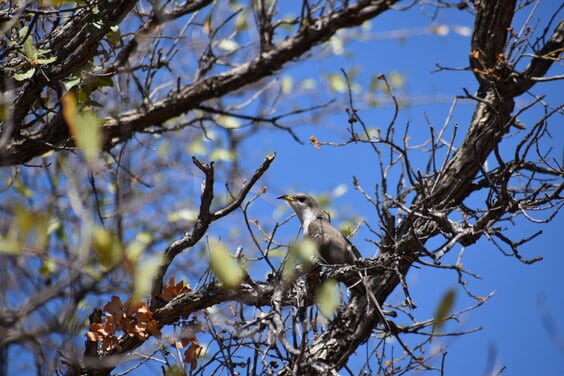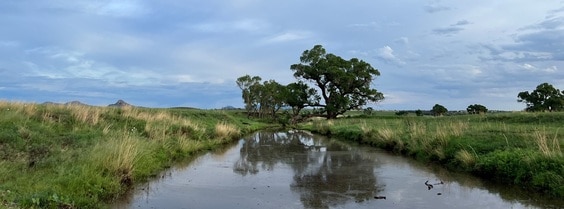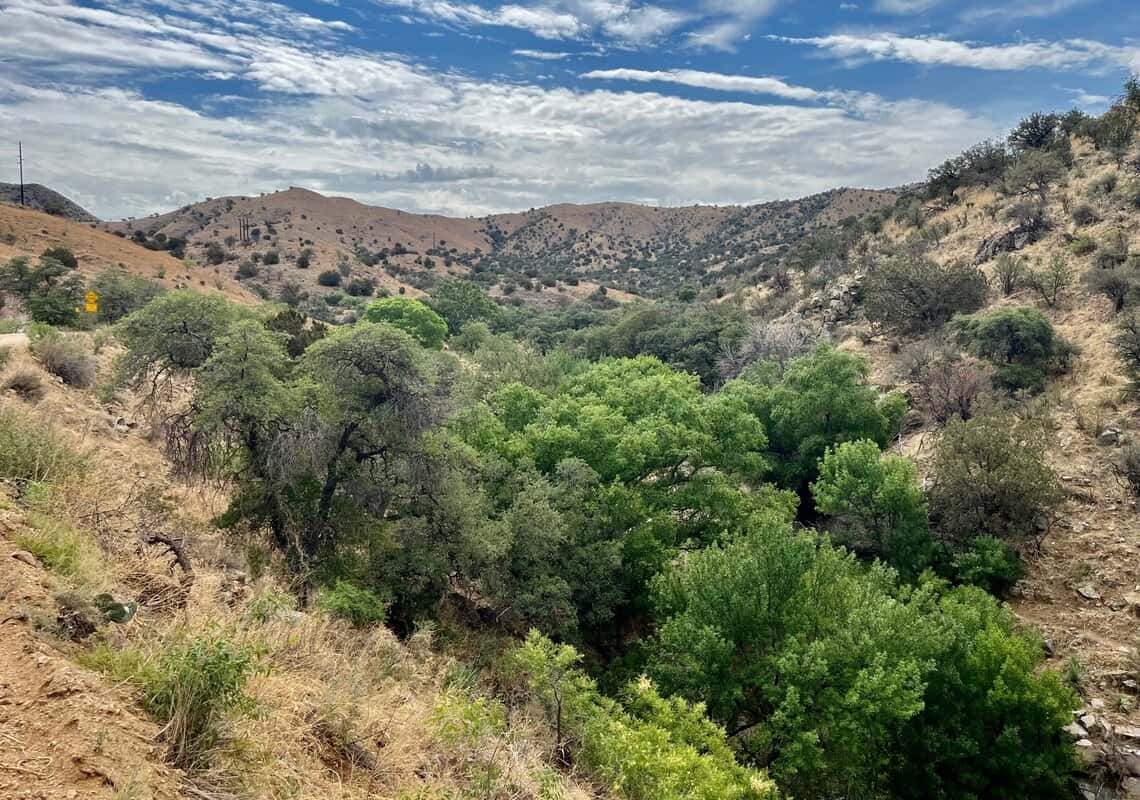Nick Beauregard, Research Biologist, Southern Sierra Research Station
Western Yellow-billed Cuckoos have experienced steep population declines across their range in recent decades, primarily due to loss and alteration of their favored riparian habitat. While not recognized as a unique subspecies, the western distinct population segment (DPS) of the Yellow-billed Cuckoo was listed as federally threatened in 2014 because of these declines, prompting and a new wave of survey efforts and research aimed at identifying occupied habitat and working towards population recovery.

In 2022, thanks to funding from a Competitive State Wildlife Grant awarded by the US Fish & Wildlife Service, we had the opportunity to observe a snapshot of Yellow-billed Cuckoo occupancy across their entire western range for the first time. Led by Southern Sierra Research Station (SSRS), Arizona Game and Fish Department (AZGFD), Utah Division of Natural Resources (DNR), New Mexico Department of Game & Fish (NMDGF), and California Department of Fish and Wildlife (CDFW), twelve western states came together to pool their resources and coordinate a massive survey effort. Using a species distribution model developed by Utah DNR, we selected a minimum of 250 survey sites, with each state allocated a number of sites proportional to the amount of critical habitat contained within that state. State coordinators worked with landowners and agencies to secure permitting and site access, allowing a field staff of over 50 to complete 3 call-playback surveys at each site during the 2022 breeding season. CDFW also placed autonomous recording units (ARU’s) at multiple sites in CA to explore acoustic monitoring methods for cuckoos.

In total, we successfully surveyed over 300 sites, exceeding our original goal of 250, and we detected over 550 cuckoos in 8 states. Most cuckoos were found in Arizona, New Mexico, and California, where we also had the most survey sites. However, they were present in smaller numbers in Colorado, Utah, Nevada, Wyoming, and Idaho. No cuckoos were detected in Oregon, Washington, or Montana.
Arizona accounted for the majority of detections, which is not surprising given that it had the most survey sites and is known to host some of the largest remaining cuckoo populations. In 112 sites surveyed in AZ, cuckoos were detected in 72, with 48 containing at least one occupied territory. The highest rates of detections occurred in native riparian forests including the San Pedro River, Santa Cruz River, Sonoita Creek, Aravaipa Creek, Cienega Creek, Agua Fria River, Verde River, Gila River, and Tonto Basin. We also documented cuckoos in the Sky Islands of southeastern Arizona using monsoon-influenced Madrean-oak woodlands and xeroriparian habitat in ephemeral and intermittent drainages. Cuckoos were absent from most AZ sites with sparse, altered, or narrow habitat, particularly in the central part of the state.
Overall, the survey results illustrate the cuckoo’s continued reliance on healthy southwestern riparian areas as a refugia, but also demonstrates their propensity to find and utilize suitable riparian habitat elsewhere within their historic western range and to utilize monsoon-influenced Madrean-oak woodlands in southeastern Arizona. This also highlights the importance of conserving and restoring riparian habitat range-wide, which is preferred by cuckoos and many other sensitive species but continues to be at risk.

The next step for the partnership is to incorporate all survey data collected in 2022 by other entities from the western DPS to supplement our results. We will then use occupancy modeling to provide further insights into factors influencing cuckoo distribution across their range. An updated species distribution model based on the new data will complement our results by providing maps of potential cuckoo habitat, while data collected from autonomous recording units will be compared to results from our human-observer surveys.
By capturing a snapshot of cuckoo occupancy across the entire range for the first time, our ongoing analyses will fill critical gaps in knowledge for the species and inform conservation and recovery plans. In exceeding our sampling goals, we have also demonstrated the potential of such large, collaborative projects to succeed in delivering meaningful results. We thank the USFWS who made the project possible, our state and NGO partners for their support and coordination, and the fearless field staff who endured multitudes of environmental and logistical extremes to complete surveys.

